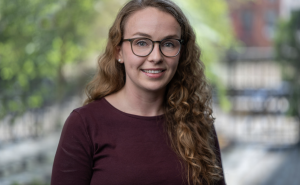New Tool for Tracking Cholera Outbreaks Could Make It Easier to Detect and Stop Deadly Epidemics
Machine-learning algorithm uses cholera antibody test results to identify recently infected individuals
Algorithms using data from antibody signatures in peoples’ blood may enable scientists to assess the size of cholera outbreaks and identify hotspots of cholera transmission more accurately than ever, according to a study led by scientists at the Johns Hopkins Bloomberg School of Public Health.
Current methods for tracking cholera outbreaks rely heavily on local hospital reports of cholera-like diarrhea cases and are relatively inaccurate. In the new study, to be published online February 20 in Science Translational Medicine, the researchers developed machine-learning algorithms that use results from multiple cholera antibody tests to accurately identify individuals recently infected.
The team found that an algorithm using a set of antibody measures could determine very sensitively, with very low rates of false positives, whether a person had had a cholera infection within different windows of time in the year prior to giving the blood sample—for example, within the previous 45 days or previous 100 days.
“We think this could be a useful new tool not only for tracking cholera incidence in different populations, but also for measuring how well different cholera-control interventions work,” says study lead author Andrew Azman, PhD, assistant scientist in the Department of Epidemiology at the Bloomberg School.
Cholera arises where water and sanitation infrastructure is unsafe. It is caused by the bacterium Vibrio cholerae, and features watery diarrhea that can bring about life-threatening dehydration and loss of electrolytes. The disease is thought to infect two to three million and kill more than 100,000 people around the world every year, especially in Africa, South Asia and Haiti. A recent major outbreak in Yemen reported more than one million cases, though due the decimated health surveillance infrastructure in the country, the true number of cases remains unknown.
Although a key first step in controlling cholera is getting an estimate of its geographic extent and rate of spread, public health officials in low-income settings usually can make only rough estimates based on the numbers of patients with watery diarrhea that visit local hospitals.
“If we want to eliminate cholera, we need to be able to count cases accurately and this need is what motivated our study,” Azman says. “Even in places like Bangladesh, where cholera has been studied for decades, we don’t have good estimates of how much cholera there is and where in the country it tends to occur.”
The study was conducted by a team of scientists from several institutions including the Bloomberg School, the University of Utah, Massachusetts General Hospital, Epicentre and the International Centre for Diarrhoeal Disease Research in Dhaka, Bangladesh. The latter provided 1,569 blood test results, which included measures of different sets of anti-cholera antibodies from local cholera cases and uninfected contacts. Azman and colleagues used the antibody data to “train,” or program, machine-learning software algorithms to identify people who had been infected with cholera in recent weeks or months.
“Different kinds of antibodies against Vibrio cholerae tend to increase, peak and fall back to normal levels with different timing following exposure to cholera, so we can use those differences in antibody responses to estimate whether and when an individual was infected,” Azman says. “Having a test that would allow us to know if a person had had a recent cholera infection could open up the door to tracking the trends of cholera transmission in a population through regular surveys where a random group of people are asked to provide a drop of blood.”
Such a test would also improve the ability to better understand how new interventions against cholera, including water and sanitation improvements and vaccines, lead to reductions in cholera risk.
Using six different antibody-based tests might be impractical in low-resource settings, but Azman and his colleagues found that when they used the two most useful measures of cholera antibody levels, they could estimate the recent time window for cholera infection almost as accurately—and still much more accurately than single antibody-test results.
The team validated their two-measure algorithm by finding that it remained accurate when applied to an independent set of blood test results from 38 volunteers in North America who had been infected V. cholerae as part of a clinical trial for a cholera vaccine. The volunteers were in the control group that did not receive the vaccine.
Finally, Azman and colleagues set up software simulations of cholera outbreaks of varying size and simulated small serosurveys (where a random subset of the population had their antibodies measured). They found that testing as few as 500 people after an outbreak and applying their algorithm could generate good estimates of cholera incidence during these simulated epidemics, especially if the epidemics were relatively short, lasting weeks or months.
These advances may provide a much-needed tool for both measuring and accelerating progress towards eliminating cholera as a public health threat by 2030, a recently announced objective by the WHO-backed Global Taskforce for Cholera Control.
“Our approach worked quite well across a range of epidemic sizes and even with fairly small sample sizes, suggesting that models like ours—applied to data from surveys of healthy people where blood is collected—could be useful for better understanding cholera transmission in the field,” Azman says.
He and his colleagues currently are working on and planning further projects using antibody test results to estimate cholera incidence across Bangladesh and in other countries where cholera outbreaks remain common.
“Estimating Cholera Incidence with Cross-Sectional Serology” was written by Andrew Azman, Justin Lessler, Francisco Luquero, Taufiqur Rahman Bhuiyan, Ashraful Islam Khan, Fahima Chowdhury, Alamgir Kabir, Marc Gurwith, Ana Weil, Jason Harris, Stephen Calderwood, Edward Ryan, Firdausi Qadri and Daniel Leung.
Funding for the study was provided by the Bill & Melinda Gates Foundation (OPP1171700, OPP1191944) and the National Institutes of Health (R01 AI135115, R01 AI106878, R01 AI103055, R01AI130378, D43 TW005572, K08AI123494, K08AI100923, K43TW010362, U01AI058935).
# # #
Media contacts for the Johns Hopkins Bloomberg School of Public Health: Barbara Benham at 410-614-6029 or bbenham1@jhu.edu and Robin Scullin at 410-955-7619 or rsculli1@jhu.edu.





